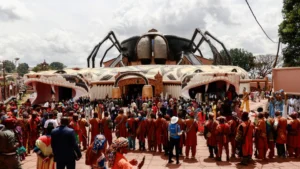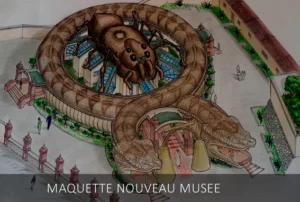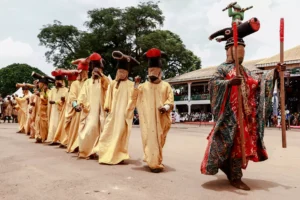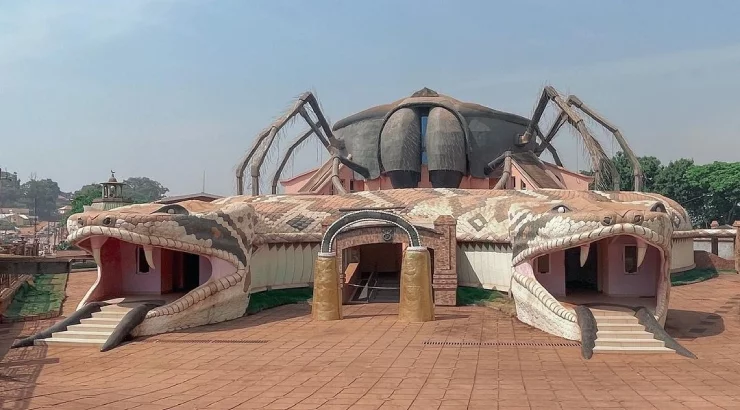Cameroon: The Bamoun Museum was officially inaugurated on Friday, April 12, 2024 and Saturday, April 13, 2024. The museum is described as an ‘Architectural Jewel’ by the cultural promoters.
The opening ceremony of the museum was held at the Royal Palace Square in Foumban, where thousands of people gathered on Saturday to enthusiastically celebrate the opening of the Museum of the Bamoun Kings.

The descendants of the royal family, remembered their monarchy that dates back to the six centuries and attended the event dressed in traditional ceremonial attire with colourful boubous and matching fezes.
To conduct the official inauguration ceremony, the palace released a statement which confirms that, “The Bamoun palace chiefdom confirms the official inauguration of the ‘Musee des Rois’ Bamoun on Friday and Saturday on April 12 and 13, 2024, in Foumban.”

As per the sources, the clarification followed the earlier reports that suggested the cancellation of the event, and is expected to be chaired by the President Paul Biya or any of his designated representative.
The Sultanate King Mouhammad Nabil Mforifoum Mbombo Njoya welcomed approximate 2,000 guests to the opening of the museum in Foumban, which is the historic capital of the Bamoun Kings.

At the opening ceremony, the traditional Griot narrators played drums and tunes on the long traditional flutes in multi-coloured boubous, whereas, the palace riflemen fired shots to punctuate the arrival of distinguished guests which mainly included ministers and diplomats.
After this, the princes and princesses from the Bamoun chieftaincies performed the ritual Ndjah dance in yellow robes and animal masks.

The architectural structure of the museum draws the inspiration from the kingdom’s traditional emblem:
Double Bell: These placed at the entrance of the museum and are a symbol of patriotism, as the bell was traditionally used by the King to rally and energise his troops.
Double Headed Snake: The main attraction of the museum is this double-headed snake that represents the Bamoun’s victories on two fronts and is a symbol of the kingdom’s power.
Spider: The spider is designed at the top of the two snakes and a symbol of industriousness. It is said that the King encouraged his people to be diligent as a spider, by ceaselessly weaving its web.
Historic Tell-Tales
At the historic museum of the Bamoun Sultanate, every stone, every symbol and artifact tell-tales a story. A story of people, a kingdom and a culture that has weathered the sands of time to stand tall in the annals of African history.

A 50-year-old spectator, Ben Oumar said that the festival is for Bamoun people. They have come from all over to experience this unique moment.
The civil servant Mahamet Jules Pepore also stated that it is a proud feeling to attend the event as they have been waiting for it from a long time.
King Njoya’s great grandson, 30-year-old Sultan King Mouhammad said, “We pay tribute to a king who was simultaneously a guardian and a pioneer… which was a for us to be proud of our past in order to build the future and show that Africa is not an importer of thoughts.”
To commemorate the work of his great-grandfather former Sultan King Ibrahim Mbombo Njoya Launched the construction of the museum in 2013 after realising the palace rooms were too cramped.
Notably, the opening of the museum comes months after the Nguon of the Bamoun people as a set of rituals that are celebrated in a popular annual festival, that joined UNESCO’s List of the Intangible Cultural Heritage of Humanity.

